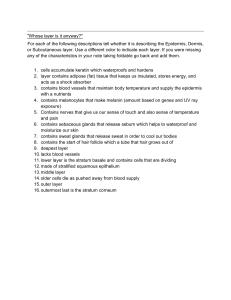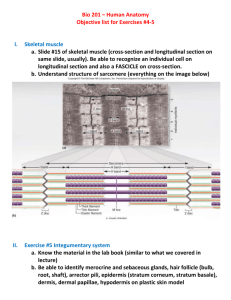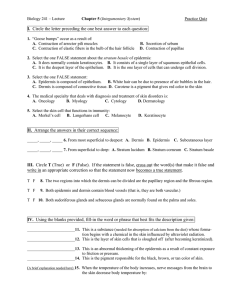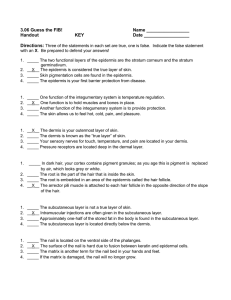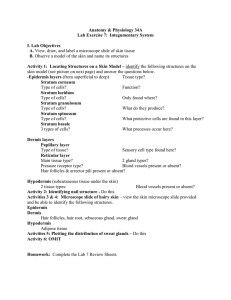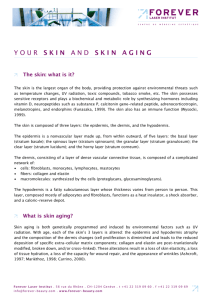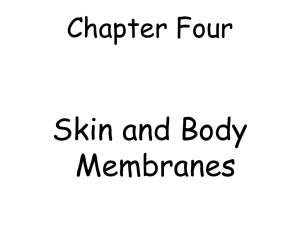Integumentary System - Bath County Schools
advertisement
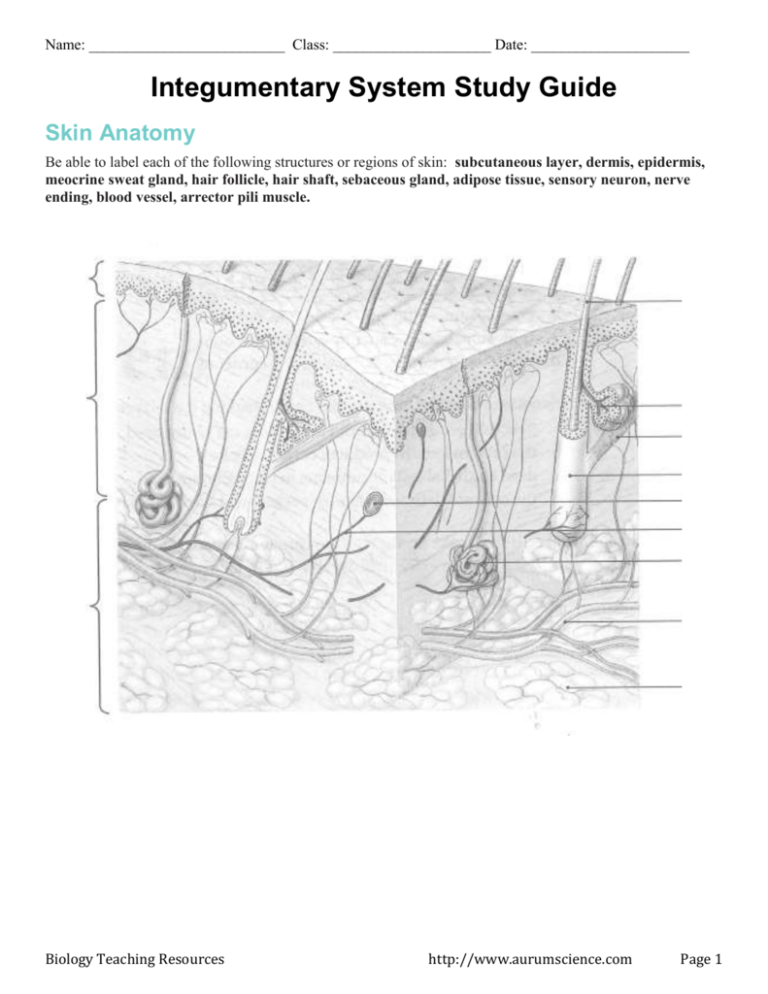
Name: __________________________ Class: _____________________ Date: _____________________ Integumentary System Study Guide Skin Anatomy Be able to label each of the following structures or regions of skin: subcutaneous layer, dermis, epidermis, meocrine sweat gland, hair follicle, hair shaft, sebaceous gland, adipose tissue, sensory neuron, nerve ending, blood vessel, arrector pili muscle. Biology Teaching Resources http://www.aurumscience.com Page 1 Name: ___________________________ Class: ______________________ Date: ____________________ Vocabulary 1. Avascular – 2. Stratum – 3. Keratin 4. Keratinocytes – 5. Melanocytes – 6. Sebum 7. Scar Tissue - Short Answer 8. Which layer of the skin (Epidermis, Dermis, or Subcutaneous) is responsible for or contains the structures needed for the following functions? a. Protection – b. Lipid Storage – c. Sensory Reception – d. Cooling Body Temperature – 9. What specifically differentiates thick skin from thin skin? What areas of the body have thick skin? 10. Place each of these thin skin strata in the epidermis in order from youngest (1) to oldest(4). __________ Stratum corneum __________ Stratum granulosum __________ Stratum basale __________ Stratum spinosum Page 2 Name: ___________________________ Class: ______________________ Date: ____________________ 11. Why does the stratum basale form ridges? How are these ridges visible to us? 12. Describe how skin cells change as they move from the lower layer up. When do they stop dividing? At what point are they the most heavily keratinized? At what point do they die? 13. Why does skin peel off in sheets instead of just one cell at a time? 14. Why would human evolution favor skin with more melanin in areas near the equator, and skin with less melanin in areas closer to the poles? 15. List the three types of skin cancer, and explain which cells they affect. Which is the most dangerous? 16. Use the ABCD rule to identify which of these two moles is more likely to be cancerous. 17. What type of tissue is found in the upper layers of the epidermis? What is found in the dermis? The subcutaneous layer? 18. What layer is tattoo ink injected into. Why this layer? 19. What determines the border between hair shaft and hair root? 20. What is the purpose of hair? 21. The arrector pili muscle is a vestigial structure in humans. What purpose does it serve in other animals? 22. What is the relationship between sebum and acne? Page 3 Name: ___________________________ Class: ______________________ Date: ____________________ 23. Compare apocrine sweat glands and merocrine sweat glands. What does each secrete? Which is responsible for body odor? 24. Explain the role of each of the following in repairing the integument. a. Mast Cells – b. Stem cells (from stratum basale) – c. Phagocytes – d. Fibroblasts – 25. What changes occur in the skin during aging that causes each of these symptoms? a. Increased rate of injury/infection – b. Increased sensitivity to UV light – c. Reduced bone strength – 26. Compare how skin visibly changes during cyanosis and jaundice. What is the underlying cause of each? 27. What causes rickets? 28. What is botox, and how does it help to remove wrinkles in skin? 29. Give an example of a fungal infection, bacterial infection, and viral infection of the skin. How are most of these infections spread? 30. Describe the difference between the effects of first-degree, second-degree, and third-degree burns. Page 4
